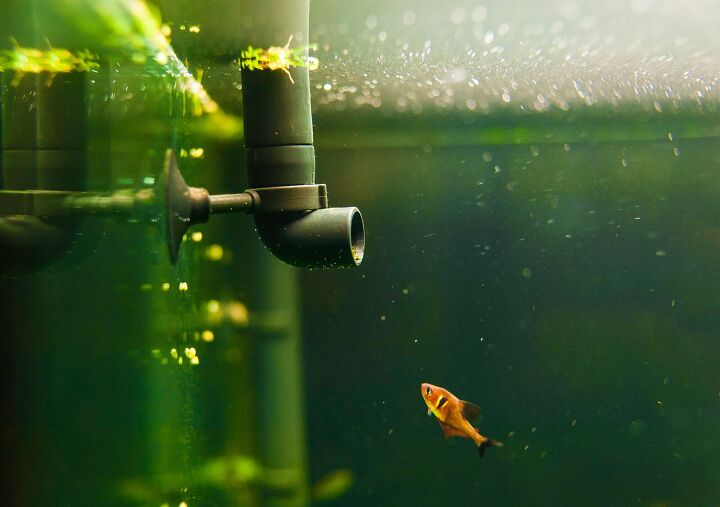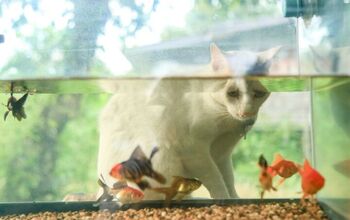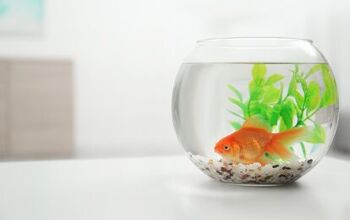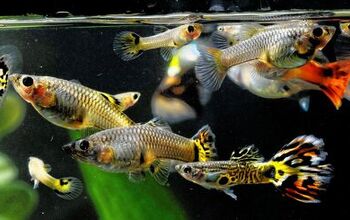Fish Tank Filter Not Pumping Water? (We Have a Fix!)

Fish tank filters are an essential component of every home aquarium. Without the filter, it’s unlikely that your fish would survive for very long in the tank, as it is responsible for cleaning the water and ensuring that your fish have a habitable place to live.
Is your fish tank filter making the typical noise indicating that it’s active but not pumping any water? In this case, there may be a clog or an air lock in the filter. If the tank filter wasn’t primed before turning it on, this will “air lock” the impeller and prevent it from pumping. Priming involves putting water into the reservoir until it’s full, then turning the pump on to allow the water to filter through.
While some fish tank filters are self-priming, others still need to be primed manually. If you neglect to prime a filter before using (or in between tank cleanings), it will run with air in the tubes instead of water.
Do You Need Appliance Repair Services?
Get free, zero-commitment quotes from pro contractors near you.

Importance of Proper Fish Tank Filtration
Ensuring that your fish tank has adequate filtration is paramount to maintaining a heathy and thriving habitat for your fish. If your fish tank filter is not functioning properly, toxins can start to collect in the aquarium and you could eventually end up poisoning the fish. Not only does insufficient filtration lead to the build-up of toxins, but it can also cause a decline in the overall water quality.
Without appropriate filtration, organic waste and debris will collect at the base of the tank and can cause an increase in algae growth. As the water quality in the fish tank deteriorates, your fish are more likely to become stressed and can become more vulnerable to disease. Because of this, it’s crucial that you act quickly whenever you’re experiencing any issues with your fish tank filter.
Another important role that filters play in fish tanks is to deliver oxygenation and aeration. Like us humans, aquarium fish need oxygen to breathe. However, unlike humans, they get their oxygen from water instead of air. If the water in your tank doesn’t have enough dissolved oxygen, your fish will basically suffocate.
Circulation is also necessary in home aquariums, as water movement is a natural part of the habitat that fish come from in the wild.
Fish Tank Filter Not Pumping Water
If you notice that your fish tank filter is not pumping water, you need to completely overhaul the filter. Start by unplugging it, and taking it apart to clean everything except for the filter media. Focus on cleaning the motor housing and impeller. You can even try unmounting both to ensure they get a better clean.
Once you’ve done a thorough clean, you can set up the filter but do not turn it on until it has been primed. This process involves submerging the filter in water, particularly the housing of the impeller. If you don’t prime the filter, you will cause an air lock in the impeller and prevent it from pumping – which is likely what caused your problem in the first place.
How to Prime a Fish Tank Filter
Priming is a part of the setup process of a tank filter, which involves filling up the reservoir and filter with water to get it going. If you don’t prime the filter before you use it, it will run with air in the tubes. This will eventually cause the motor to overheat and burn up. Not to mention, the filter isn’t filtering water is it should, which puts your fish at risk.
Fortunately, priming a fish tank filter is a very easy process. Some filters are self-priming, or no-prime, meaning all you have to do is press the prime button to bring water into the tubes and chamber. However, not all fish tank filters are self-priming and some still need to be primed manually before they can be used.
To prime your fish tank filter, make sure that the pump is turned off and pour water into the reservoir until it’s full. Another easy way to do this is to simply have a pitcher or cup of water on hand, turn on the filter, and pour the water in the filter as it’s starting up. The water will work its way through the system. In some cases, you may need to continuously pour water into the reservoir as it’s running to fully prime it.
Filter Still Not Pumping?
If you turn on the filter and hear a buzzing noise but don’t have any flow, you need to jog the impeller. Remove enough components so that you can access the impeller and then bump it using your finger. This is simply an indication of wear on the motor, but shouldn’t be a cause for concern.
If all else fails, you may have to replace your filter media with a fresh cartridge. Clogged filter media may be the cause of restricted flow. While you’re replacing the media, make sure that you also clean the inlet tub and prefilter on the inlet opening to ensure you’ve taken care of all the potential clogs.
Other Common Problems with Fish Tank Filters
In addition to a fish tank filter not pumping, there are a number of other common issues you can experience with your filter. These include, but are not limited to:
No Suction
Most fish tank filters function by means of a motor-operated impeller, which creates suction in the filter housing to push tank water up the intake tube and through the filter media. If your filter cannot create suction, it will not work. If you hear your filter running but don’t see any water being drawn up, this is often caused by a clog in the impeller or the intake tube.
To fix this issue, unplug the filter and take it apart to locate the clog. Rinse the intake tube and impeller housing thoroughly to free any solid debris. Then, put the filter back together and test it for functionality. If this does not fix the issue, you may have a problem with the impeller or motor itself. In this case, your best bet is to purchase replacement parts or a whole new filter.
Note: Check your tank filters warranty first, as some repairs may be covered by the manufacturer.
Stopped Functioning Entirely
If the day has come that your tank is completely silent and your filter isn’t running at all, unplug the filter and check if something is clogging the motor to prevent it from operating. It’s not uncommon for a power outage or surge to impact your tank equipment.
In this case, the filter may just need a couple of hours to rest before plugging it back in. If the filter still isn’t working after you’ve done this, check to see if the power source is the issue – if not, the issue likely lies with the motor. You may be able to find a repair kit for your filter from an online retailer. But, in most cases, it’s easier and more cost-effective to simply buy a new tank filter.
Improper Flow Rate (Too Low or Too High)
You’re probably already aware that various species of aquarium fish have distinct preferences for the different aspects of water chemistry. However, many fish also have water flow preferences. For instance, fish that come from ponds or lakes usually prefer slow-moving waters. Whereas, fish that are native to streams, rivers, and even the ocean will thrive best in a water that has a stronger current.
Before you set up your tank and stock it with fish, it’s crucial that you do the necessary research to determine the needs of your fish. That way, you can make sure that the filter you purchase will be able to accommodate those preferences. Fortunately, there are filters available that allow you to adjust the flow rate as needed – using a lever to change the filter intake and output.
Though, if you don’t have a filter with an adjustable flow rate and you notice that the flow rate is too low, you might need to upgrade to a more powerful filter. Alternatively, you may be able to install an additional source of filtration. On the other hand, when the flow rate is too high, there isn’t much you can do aside from swapping the filter out for a different one.
Do You Need Appliance Repair Services?
Get free, zero-commitment quotes from pro contractors near you.

Related Questions
How long can aquarium fish survive without an air pump?
Without an air pump and in completely still water, fish will survive approximately two days. However, if you have the right type of filter that produces sufficient surface water movement, you may not need an air pump at all.
How often should you clean your fish tank filter?
The frequency with which you clean a fish tank filter will depend on the type that you have. With hang-on filters, the most common type used in aquariums, they should be cleaned every few weeks or at least once a month. The same is true for in-tank filters. Sponge filters should be cleaned about every two weeks and canister filters can go about every three to four months.

Jessica considers herself a home improvement and design enthusiast. She grew up surrounded by constant home improvement projects and owes most of what she knows to helping her dad renovate her childhood home. Being a Los Angeles resident, Jessica spends a lot of her time looking for her next DIY project and sharing her love for home design.
More by Jessica Stone



























